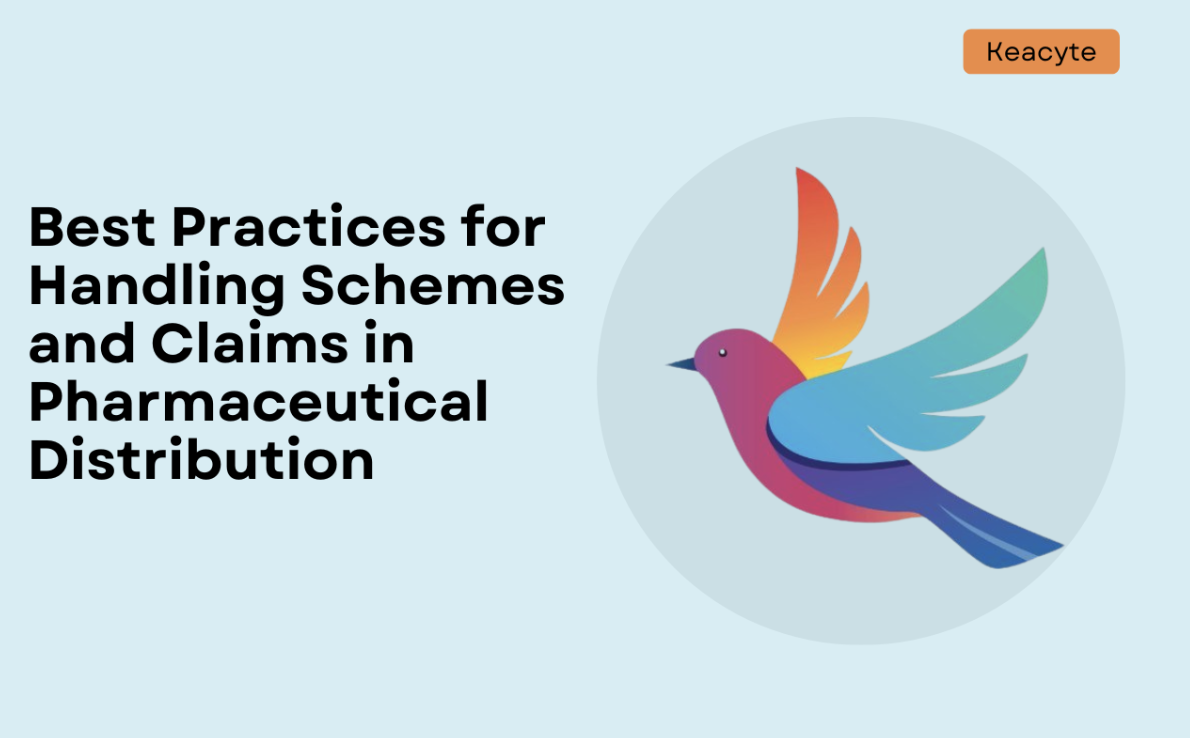
The pharmaceutical distribution system is a critical logistics ecosystem that drives sales and ensures the competitive positioning of a pharma company in the market. The relationship with distributors, and the deployment of schemes and claims, play a crucial role in acquiring market share.
However, if the distribution system is haphazard and without structure, it can become inefficient and cause loss of profit for the company.
Common Challenges in Scheme and Claim Management
Manual Errors
Manual entries, which could be paper-based or spreadsheet-driven, carry the risk of errors such as duplicate entries or missing data. Even a minor mistake can cause financial damage to the company.
Delayed Approvals
A multi-level approval chain often delays approvals, slows down claim settlement, and can strain relationships with distributors.
No Clarity on Budget
Lack of real-time visibility into zonal or product-level budgets can lead to financial misalignment, overspending, or mismanaged promotions, and also increase compliance risks.
No Transparency
Resellers often lack clarity on claim status, while companies struggle to track scheme effectiveness and measure ROI.
Tech-Enabled Approach
These common challenges in scheme and claim management can be solved with the help of technology. Tech-enabled approaches ensure accuracy, visibility, and efficiency.
Designing Targeted Discount Schemes
● With a tech-driven approach, discount plans can be aligned with specific business objectives such as increasing secondary sales or clearing out inventory.
● Data-driven insights can be used to segment distributors and customize offers for maximum impact.
● Blanket discounts should be avoided, as they dilute margins without measurable ROI.
Ensuring Compliance with Zonal Budgets
● Budget allocation controls at the regional or zonal level should be implemented.
● Real-time dashboards can help sales and finance teams monitor utilization.
● When claims reach the budget threshold, the system should trigger alerts to prevent overspending.
Automating Claim Calculations
● Replace manual spreadsheets with automation tools that calculate reimbursement requests based on predefined promotional offers.
● Digitization reduces disputes by ensuring consistent, error-free calculations across all channel partners.
● This drastically reduces pressure on sales and finance teams, allowing them to focus on strategy.
Maintaining Real-Time Visibility from Start to Settlement
● Track every stage of the claim cycle—from scheme creation, distributor participation, claim submission, approval, and settlement—through a centralized platform.
● Distributors should be able to check claim status via self-service portals.
● Real-time visibility enables management teams to evaluate the effectiveness of incentive programs and adjust strategies when needed.
How CRM-Based Platforms Address Challenges
CRM-based platforms support pharma companies by digitizing workflows, centralizing data, and measuring ROI.
A CRM like Keacyte is transforming how pharma companies design, execute, and monitor promotional offers. It optimizes distribution strategy by planning, approving, and tracking discount schemes in real time.
Why Platforms Like Keacyte Change the Game
● Streamlined processes: Automates scheme creation, claim validation, and settlement workflows, reducing cycle times.
● Improved trade partner relationships: Transparent communication and faster claim settlements enhance relationships with distributors and build trust.
● Enhanced regulatory adherence: Built-in budget controls and audit trails ensure adherence to regulatory requirements.
● Actionable insights: Analytics help measure ROI, identify high-performing discount plans, and refine promotional strategies.
● Maximizing ROI from promotional strategies: With inbuilt CRM like Keacyte, pharma companies can reduce costs through automation and accelerate sales with targeted promotional campaigns.
Case in Point: How Automation Transformed Schemes and Claims
Keacyte: A Pharma Success Story
A leading pharmaceutical company specializing in nutrition products faced challenges in managing schemes and claims, including verifying claims against the correct schemes and retrieving supporting documentation.
With an end-to-end automated solution, Keacyte streamlined the process:
● Sales leaders and administrators defined schemes.
● Sales teams gained quick visibility, attached invoices, and computed claims effortlessly.
● The system ensured accuracy, reduced manual errors, and expedited approvals.
By digitizing workflows and centralizing data, Keacyte boosted transparency, reduced disputes, and enhanced efficiency. The company strengthened distributor relationships, improved compliance, and achieved measurable ROI.
Pharma companies leveraging Keacyte have reported significant improvements, including seamless data access, reduced paperwork, robust audit trails, lower operational costs, stronger data integrity, end-to-end process completeness, faster turnaround times, and measurable profits.
The Impact Across Teams
● With CRM-based tech applications, sales leaders can create data-driven promotional offers tailored to market needs, track real-time performance, and analyze sales impact. They can also discontinue underperforming schemes and design new ones based on real-time insights.
● Finance teams can ensure governance and cost control through automated claim validation. Having a digital trail of every claim simplifies compliance and financial reporting, reducing financial leakage and improving ROI accountability.
● Distribution managers can strengthen channel relationships through faster claim settlements. Channel partners gain visibility into claim status via self-service portals, fostering trust and loyalty over time.
The technology for handling schemes and claims supports sales leaders, finance teams, and distributors, ensuring smoother operations and alignment with company goals.
Conclusion
CRM inbuilt solutions for schemes and claim management are optimizing processes with improved accuracy, ensuring regulatory compliance, and delivering promising ROI. In an increasingly competitive market, companies that digitize their scheme and claim processes will be better positioned to safeguard profitability, accelerate growth, and deliver sustainable value to all stakeholders.